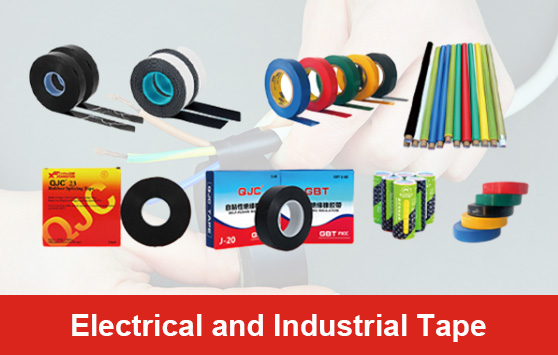Understanding Wholesale Prices of PVC Electrical Insulation Tape
In the world of electrical applications, PVC (Polyvinyl Chloride) electrical insulation tape is an indispensable component, ensuring safety and efficiency in wiring systems. With its numerous benefits, including durability, flexibility, and excellent insulating properties, the demand for PVC tape has consistently risen. This article delves into the factors influencing wholesale prices of PVC electrical insulation tape, market trends, and tips for sourcing the best deals.
Factors Influencing Wholesale Prices
The wholesale price of PVC electrical insulation tape is affected by various factors
1. Raw Material Costs PVC is derived from petroleum products, and fluctuations in the prices of oil can significantly impact the cost of PVC tape. When oil prices rise, the cost of raw materials increases, leading to higher wholesale prices.
2. Manufacturing Processes The methods used to produce PVC electrical insulation tape also play a vital role in pricing. Advanced manufacturing techniques that enhance the tape's properties, such as improved adhesion and temperature resistance, may result in higher prices due to increased production costs. Manufacturers investing in state-of-the-art machinery often pass these costs on to wholesale buyers.
3. Market Demand As the construction, automotive, and electrical industries grow, the demand for reliable insulation solutions increases. During periods of high demand, prices may rise accordingly. Conversely, during economic downturns, a decline in demand can force suppliers to lower their prices to encourage sales.
4. Quality and Standards Different grades of PVC tape are available, ranging from standard to premium products. Premium tapes often meet specific industry standards or certifications, making them more expensive. Retailers and construction companies must balance the need for quality against cost, affecting wholesale pricing strategies.
5. Supplier Competition The level of competition among suppliers in the PVC tape industry also influences wholesale pricing. When many suppliers vie for market share, they may lower their prices to attract more customers. Conversely, in a less competitive market, suppliers may maintain higher prices.
Current Market Trends
In recent years, the market for PVC electrical insulation tape has witnessed some noteworthy trends. The increasing emphasis on safety and electrical standards has propelled demand for high-quality insulation tape. Moreover, the growth of renewable energy sources and electric vehicles has further boosted this demand, as these sectors require reliable insulation materials.
wholesale price pvc tape electrical insulation

Additionally, global supply chain issues have affected the availability and pricing of raw materials, leading to fluctuations in wholesale prices. Manufacturers are increasingly looking for ways to optimize their supply chains to mitigate these impacts, which may lead to more stable pricing in the future.
Tips for Sourcing PVC Electrical Insulation Tape
For businesses looking to purchase PVC electrical insulation tape in bulk, consider the following tips
1. Research Multiple Suppliers Don’t settle for the first supplier. Compare prices and quality from various manufacturers to find the best deal.
2. Evaluate Product Specifications Ensure that the tape meets the necessary industry standards for your applications. Quality should never be compromised for cost savings.
3. Negotiate Bulk Discounts When purchasing in large quantities, always negotiate for better pricing. Many suppliers are willing to provide discounts for bulk orders.
4. Stay Informed About Market Trends Keeping an eye on market trends can help you anticipate price changes. This knowledge allows you to make informed purchasing decisions.
5. Consider Long-term Relationships Building a long-term relationship with a reliable supplier can lead to better pricing and priority during high-demand periods.
Conclusion
Wholesale prices for PVC electrical insulation tape are influenced by multiple factors, including raw material costs, manufacturing processes, and market demand. As the industry continues to evolve, staying informed about these elements and strategic sourcing can help businesses navigate pricing challenges and ensure they obtain quality insulation solutions at competitive rates.
-
XIANGFAN Rubber Tape-Ultimate Solutions for All Your Insulation NeedsNewsJun.24,2025
-
XIANGFAN Rubber Tape-Protection for Industrial and Residential ApplicationsNewsJun.24,2025
-
XIANGFAN Rubber Tape: Superior Safety and Sealing for Demanding EnvironmentsNewsJun.24,2025
-
XIANGFAN Rubber Tape: Reliable Solutions for Every Electrical ChallengeNewsJun.24,2025
-
XIANGFAN Electrical & Industrial Tape: Powering Reliability Across IndustriesNewsJun.24,2025
-
XIANGFAN Electrical & Industrial Tape: Excellence in Every ApplicationNewsJun.24,2025
